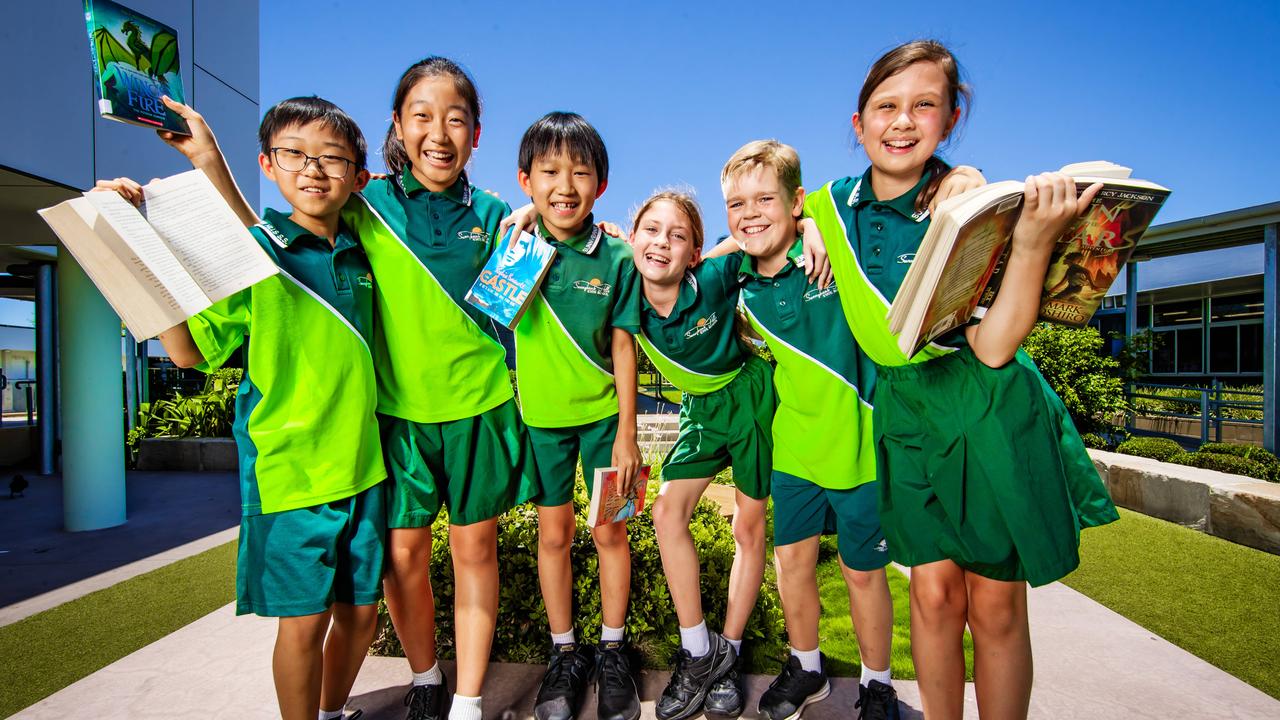Ranked: How every Qld school performed in 2023 NAPLAN
Queensland’s top performing NAPLAN schools - and the worst - have been revealed with the latest 2023 test results released today showing metropolitan state schools going toe-to-toe with the elites. SEARCH YOUR SCHOOL
The academic divide between Queensland’s most disadvantaged students and their metropolitan cousins has never been greater, analysis of the latest NAPLAN results reveal.
While Brisbane state schools were ranked alongside the state’s most prestigious private colleges, regional and remote state schools continue to languish far behind.
SCROLL DOWN TO SEE THE RESULTS FOR EVERY QLD SCHOOL
An exclusive Courier-Mail analysis of 2023 NAPLAN data for more than 1700 primary and secondary schools across all three sectors has revealed the state’s top and bottom performers.
Experts warn that unless schools are appropriately funded the divide between the haves and the have nots will continue to grow, with more cash needing to be injected into the public system, which caters for the bulk of Queensland’s most disadvantaged students.
The analysis found 10 government schools, all bar one from Brisbane, were ranked in the top 20 primary schools. But in stark contrast, only four Brisbane schools finished in the bottom 100.
The lowest-performing 100 primary schools averaged less than 420 in the 2023 NAPLAN assessment. The majority of these are schools in North/Far North Queensland. In contrast, the best-performing 100 primary schools averaged more than 520, with most in SEQ.
The comprehensive school-by-school test data comes amid government negotiations to redesign the national school funding model and right the imbalances that have led to chronic underfunding of the nation’s state schools.

Queensland Association of State School Principals president Pat Murphy said the “level of disadvantage” in schools was at a bigger gulf than ever before.
“You see it in every capital city in the country, not just in Queensland. Schools in each capital perform well across all three sectors, Catholic, public and independent. But unfortunately, the further out you go, the bigger gulf. And it’s widening,” Mr Murphy said.
“Other than funding, primary school students are missing out on early intervention.
“Why are these kids struggling in Year 3? What is holding them back?
“And (without intervention) they will keep on struggling by Year 5, Year 7 and by Year 9 it’s a chasm.”
Education Minister Grace Grace congratulated the 250,000 Queensland students who sat NAPLAN this year and gave an update on National Schools Reform Agreement talks.
“Queensland is working with the Commonwealth and other jurisdictions to deliver an improved National Schools Reform Agreement,” she said.
“We have unanimously agreed to focus on three key priorities of promoting equity and excellence, improving student wellbeing and engagement, and building a strong and sustainable teaching workforce.
“In June, I proudly signed a pledge alongside Federal Education Minister Jason Clare to ensure every Queensland state school is on a path to reach 100 percent of the Schooling Resource Standard.
“It’s important to recognise that the Schooling Resource Standard does not reflect the total funding going into Queensland’s state school system. For example, capital infrastructure investment is not included.
“I make the point again that NAPLAN is not the be all and end all. It’s a point in time check and just one of many ways schools can track student progress.”
The predominantly online Brisbane School of Distance Education emerged as the state’s top primary school, followed by Sunnybank Hills State School and Citipointe Christian College.
Upper Brookfield, Wooloowin, Indooroopilly, Newmarket, Eagle Junction, Wilston, Rainworth state schools and the Charters Towers School of Distance Education all came in the top 20.
The free public schools finished ahead of the likes of St Margaret’s Anglican Girls School, Anglican Church Grammar School and John Paul College which command annual fees of more than $15,000.

For high schools, the selective Queensland Academy for Science, Mathematics and Technology emerged on top, followed by Brisbane Girls and Brisbane grammar schools.
The in-demand Brisbane State High School was ranked in fourth.
BSHS principal Wade Haynes, who retired at the end of this year after a decade at the helm, said the school took a simple approach and refined a few processes, but largely let “results take care of themselves”.
“For us it’s our input data, Year 7 is very early in high school and we’re very interested in where those students end up in Year 12,” Mr Haynes said.
“This is a good set of data around a narrow set of measures that helps us diagnose things early, but it is one piece of a much bigger pie.
“We make sure we are helping kids make as much progress by looking at where they need to be sharp and make improvements.”
Sunnybank Hills State School principal Geoff Mill said its approach to learning began from Prep with a focus on developing skills that could transfer through the year levels.
The school is a perennial high achiever, consistently ranking in the state’s top 10 for primary schools.
Mr Mill said he and the student body took pride in achieving high quality NAPLAN scores on the back of a “success breeds success” motto.
“Our academic success starts at Prep through an explicit instruction agenda with a literacy and numeracy focus,” Mr Mill said.
“You can have a real impact in the early years. It’s important their learning is engaging and they have a sense of success and fun. The children love the structure of their learning and want to come to school.
“We find it improves behavioural and learning outcomes.”
Mr Mill said the school had developed a targeted writing program that again focused on specific literacy skills and differentiated instruction.
He said his deputy principals also taught in classrooms each week to help refine students’ writing skills.
“It allows us to give children direct feedback on a child’s writing, in small group sessions,” he said.
“The students really value that.”





